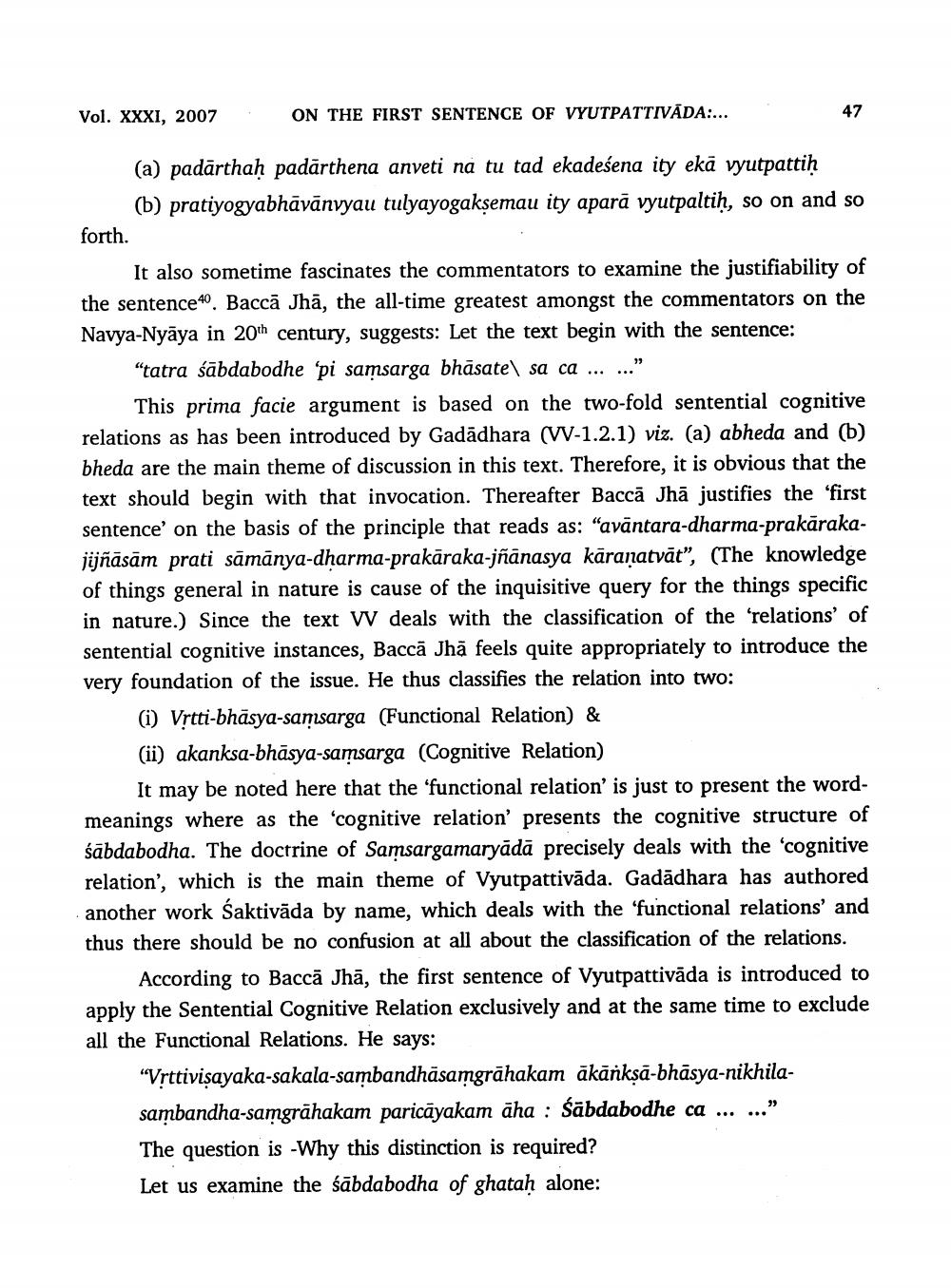________________
Vol. XXXI, 2007
ON THE FIRST SENTENCE OF VYUTPATTIVĀDA:...
(a) padārthah padārthena anveti na tu tad ekadeśena ity ekā vyutpattiḥ
(b) pratiyogyabhāvānvyau tulyayogaksemau ity aparā vyutpaltiḥ, so on and so forth.
It also sometime fascinates the commentators to examine the justifiability of the sentence40. Baccā Jhā, the all-time greatest amongst the commentators on the Navya-Nyāya in 20th century, suggests: Let the text begin with the sentence:
"tatra sābdabodhe 'pi samsarga bhāsate sa ca ... ..."
This prima facie argument is based on the two-fold sentential cognitive relations as has been introduced by Gadādhara (W-1.2.1) viz. (a) abheda and (b) bheda are the main theme of discussion in this text. Therefore, it is obvious that the text should begin with that invocation. Thereafter Baccā Jhā justifies the 'first sentence on the basis of the principle that reads as: "avāntara-dharma-prakārakajijñāsām prati sāmānya-dharma-prakāraka-jñānasya kāranatvāt", (The knowledge of things general in nature is cause of the inquisitive query for the things specific in nature.) Since the text W deals with the classification of the relations of sentential cognitive instances, Baccā Jhā feels quite appropriately to introduce the very foundation of the issue. He thus classifies the relation into two:
(i) Vrtti-bhāsya-samsarga (Functional Relation) & (ii) akanksa-bhāsya-samsarga (Cognitive Relation)
It may be noted here that the 'functional relation' is just to present the wordmeanings where as the 'cognitive relation' presents the cognitive structure of śābdabodha. The doctrine of Samsargamaryādā precisely deals with the 'cognitive relation', which is the main theme of Vyutpattivāda. Gadādhara has authored another work Saktivāda by name, which deals with the 'functional relations' and thus there should be no confusion at all about the classification of the relations.
According to Baccā Jhā, the first sentence of Vyutpattivāda is introduced to apply the Sentential Cognitive Relation exclusively and at the same time to exclude all the Functional Relations. He says:
"Vrttivişayaka-sakala-sambandhāsamgrāhakam ākāňkṣā-bhāsya-nikhilasambandha-samgrāhakam paricāyakam āha : Šābdabodhe ca ... ..." The question is -Why this distinction is required? Let us examine the śābdabodha of ghataḥ alone:




